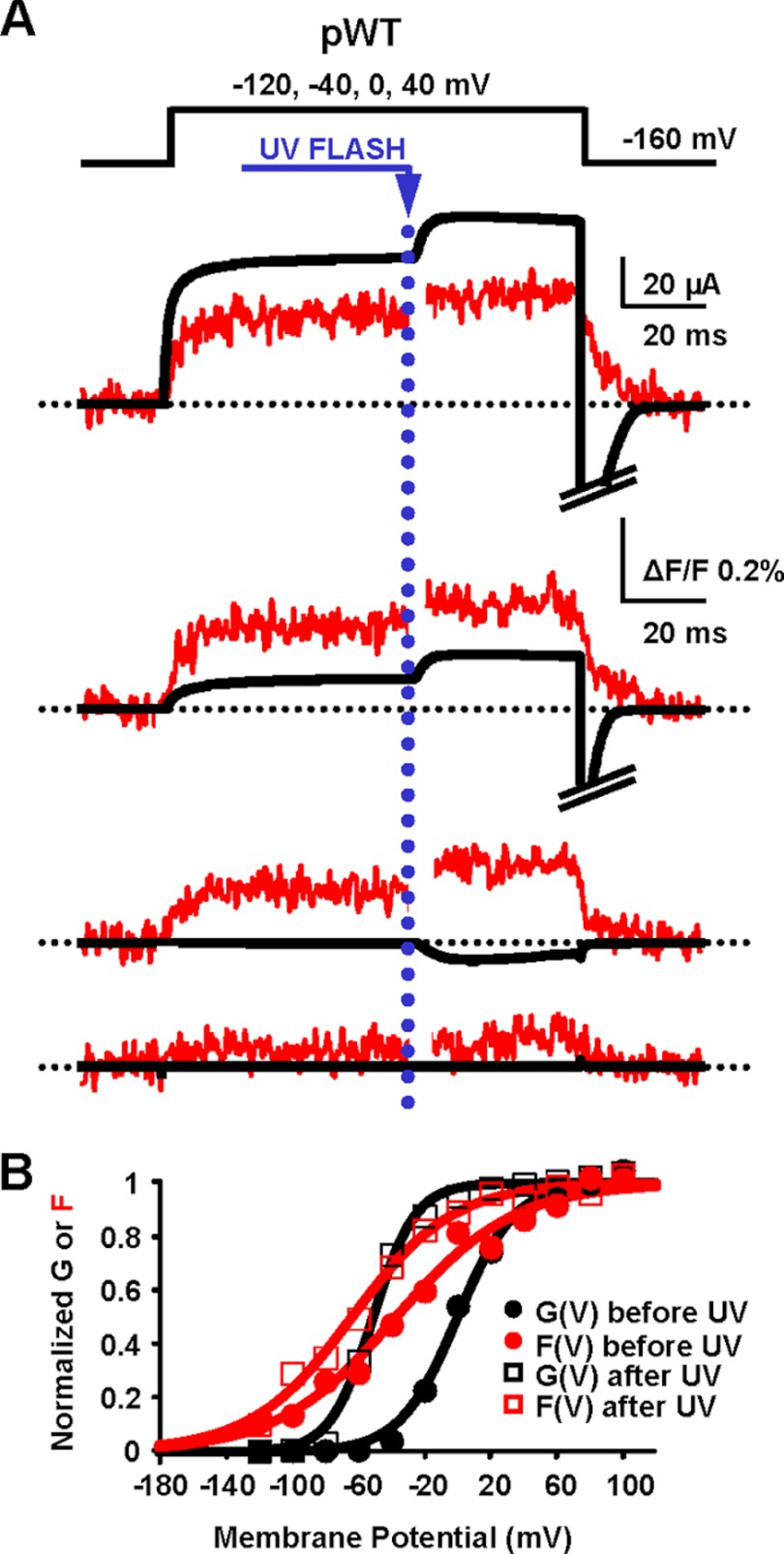FIGURE 2.
Intracellular Ca2+ photo release induces conformational changes of the VSD of BK channels. A, K+ current and fluorescence traces simultaneously recorded during depolarizations to the indicated potentials from an oocyte expressing pWT channels are shown superimposed. Caged Ca2+ release was triggered 60 ms after the onset of depolarization by UV light flashes delivered onto the oocyte. In this experiment [Ca2+]i increased from 10 to 84 μm. Ionic current and fluorescence signals increased following UV flashes. The photodiode amplifier was blanked for 3 ms during the UV flash to prevent overload. B, normalized fluorescence (F) and K+ conductance (G) data from the experiment in A, before and after UV flashes, were fit to a single Boltzmann distribution. Both curves were leftward-shifted at high [Ca2+]i: before UV, GVhalf = 0 mV and FVhalf = −37 mV; after UV, GVhalf = −51 mV and FVhalf = −63 mV. Note the crossing of G(V) and F(V) curves after Ca2+ release, consistent with the view that Ca2+ can open BK channels at membrane potentials where VSDs are not activated (5, 6, 16, 52).

